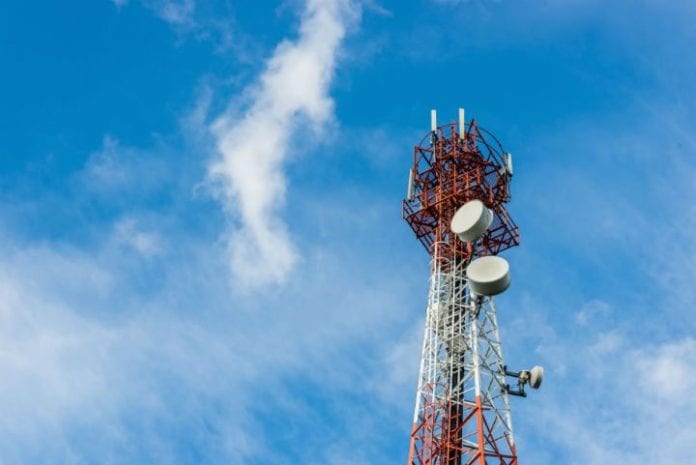AT&T continues to counter T-Mobile US’ requests that the Federal Communications Commission move forward with clarifying the “commercially reasonable” standard in its 2011 data roaming rule.
Joan Marsh, VP of federal regulatory at AT&T, noted in a recent blog post that roaming rates T-Mobile US is paying to AT&T Mobility have dropped 70% over the past three years and are in line with what T-Mobile US claims it’s paying to other operators. Marsh added that AT&T Mobility is now paying an average roaming rate that is higher than the 30 cents T-Mobile US reports it paid to other providers in 2013, “and significantly higher than the 18 cents T-Mobile projects it will pay in 2014.”
Marsh also questioned T-Mobile US’ build-out plans, noting the carrier had sufficient spectrum to cover areas where it claims it needs to roam onto AT&T Mobility’s network.
“In these broad swaths of the country, T-Mobile holds [1.9 GHz] and [1.7/2.1 GHz] spectrum that it could use to provide broadband services,” Marsh wrote. “It instead has chosen to rely on roaming. In contrast, AT&T has built out its network in many of those same areas, and, notably, it did so with the same higher-frequency spectrum T-Mobile holds. There is no reason T-Mobile could not do the same.”
T-Mobile US initially filed its petition for clarification with the FCC in May, asking the FCC to take another look at previously approved data roaming rules that it claimed were not meeting the FCC’s guidance. T-Mobile US, which reiterated its position last month, in August received support from a pair of trade associations representing rural operators.
Both AT&T and Verizon Communications have come out against the request, with AT&T claiming that its smaller rival was asking the FCC to “eviscerate” its previous ruling and upset the “careful balance” the FCC had established in “ensuring that mobile wireless providers can obtain data roaming arrangements on reasonable terms while preserving incentives to invest in broadband networks.”
“In short, T-Mobile’s latest effort to manufacture a case for new data roaming regulations offers no reasoned basis for the commission to abandon the careful balance struck in the data roaming order,” Marsh wrote this week. “T-Mobile, like the rest of the industry, has shifted to LTE, and can choose among multiple LTE roaming partners, including new roaming hub arrangements like the kind that Sprint has entered into with 27 carriers covering [38 million potential customers].”
— Citing difficulty in gaining access to important agreements, the FCC last week suspended the 180-day review period connected to Comcast’s pending acquisition of fellow cable provider Time Warner Cable and AT&T’s pending acquisition of satellite television provider DirecTV.
The suspension followed comments filed by “content companies” that said the release of confidential agreements to certain individuals with access to such information would undermine those agreements. Those content companies included CBS Corp. Scripps Networks Interactive, The Walt Disney Company, Time Warner, Twenty First Century Fox, Univision Communications, Viacom, Discovery Communications and TV One.
The suspension stopped the AT&T proposal at day 76 of the proceedings and the Comcast proposal at day 85. The FCC in August set up a steering committee to oversee the deals.
“After we rule on the objections, we will issue a Public Notice setting forth new pleading cycles that will provide sufficient time for commenters to review the relevant materials and prepare their comments,” the FCC noted.
AT&T in May initiated plans to acquire DirecTV for $48.5 billion in a deal the company said would bolster its ability to offer video content across multiple platforms, with DirecTV increasing the company’s pay-TV presence that it currently bases on its U-verse fiber product. DirecTV counted just over 20 million pay-TV customers at the end of the first quarter, while AT&T said it had just over 11 million subscribers to its U-verse broadband and pay-TV offer.
DirecTV also counts more than 18 million customers across Latin America, with AT&T noting the region’s pay-TV segment is under-penetrated at just 40%. To help gain regulatory approval in Latin America, AT&T said it would divest its interest in América Móvil, which operates across a number of Latin American countries and also owns domestic wireless reseller TracFone Wireless.
Domestically, AT&T said that if approved, it will commit to expanding broadband coverage to 15 million rural homes; continue to offer a stand-alone broadband service providing at least 6 megabits per second speed “where feasible” in current markets at a fixed priced for three years; continue offering a stand-alone DirecTV service for at least three years; and continue its commitment to net neutrality efforts.
More importantly for the wireless industry, AT&T said it remains committed to spending at least $9 billion in the government’s recently delayed 600 MHz incentive auction if there is sufficient spectrum made available for a nationwide 20 megahertz footprint. The incentive auction is reliant on a reverse-auction process that will see television broadcasters turn in spectrum holdings in exchange for cash, though the total amount of spectrum made available for the telecommunications industry won’t be known until the reverse-auction process is complete.
Reports surfaced in August that AT&T had agreed to government conditions that would allow the deal to move forward. Terms were not detailed, though it was said the move would allow the acquisition to be approved this month.
Comcast in February announced its $45 billion plans to acquire Time Warner Cable that would combine the nation’s No. 1 and No. 2 cable providers into a larger No. 1 carrier with more than 30 million customers and nearly half the domestic market. The deal is thought to be a way for Comcast to further bolster its offerings against competing offers from telecom-based providers getting into the television space like Verizon Communications and AT&T.
Make sure to keep up to date on policy news by visiting RCR Wireless News’s Policy page.
Bored? Why not follow me on Twitter?

